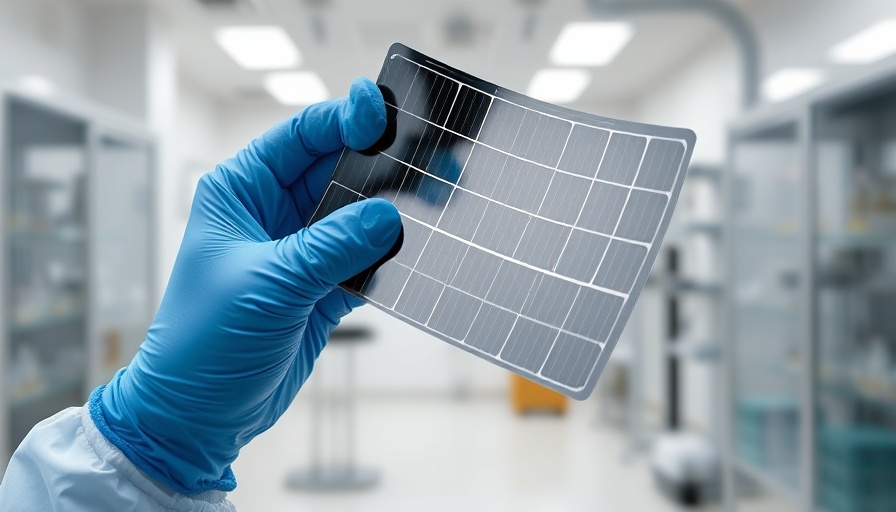
Innovative Breakthrough in Solar Technology
In an era where renewable energy is paramount, a team from the Korea Institute of Materials Science (KIMS) has made a significant leap in solar technology, developing a flexible perovskite solar cell that thrives even in high humidity. Typically, perovskite solar cells, known for their efficiency, face challenges with moisture like shorter lifespans and complex manufacturing requirements. However, this new development not only enhances durability but also paves the way for lower production costs by enabling manufacturing in ambient air.
Understanding Perovskite Solar Cells
Perovskite solar cells are an international topic of interest due to their impressive energy conversion efficiencies— often outperforming traditional silicon panels. While standard crystalline silicon solar panels last around 30 years, perovskites have historically fallen short at just 2.5 years. The research team at KIMS aims to challenge this norm by innovatively combining two-dimensional materials around the perovskite layer, enabling it to withstand humid conditions while retaining efficiency.
A Deep Dive into Efficiency and Stability
Following extensive testing, these cutting-edge cells demonstrated their ability to maintain 85% of their efficiency after 2,800 hours, withstanding both bending and shear-sliding tests exceptionally well. Specifically, the cells preserved 96% efficiency post-bending cycles, proving their potential for practical applications, including wearable technology and vehicle-integrated solar systems. Such advancements not only bolster confidence in the longevity of perovskite technology, but they also signify a critical step towards commercial viability.
What This Means for the Solar Industry
Reducing manufacturing costs is pivotal for the widespread adoption of perovskite technology. Currently, while production costs for silicon and perovskite panels hover around similar figures, predictions suggest that perovskite technology may soon cost as little as $0.10 per watt—the potential impact on global renewable energy adoption would be substantial.
The Future of Renewable Energy Sources
As global energy demand continues to rise, this innovative solar technology could represent a crucial shift towards more sustainable energy sources. With the capability to manufacture stable solar cells under less stringent conditions, there’s potential for larger-scale production, facilitating greater market penetration of solar energy solutions. Researchers aim to further develop these materials, ensuring they can perform in diverse environments, thus broadening their application range beyond tech industries.
Concluding Thoughts and Industry Implications
With these developments, the solar industry stands at the brink of transformation, integrating durability, efficiency, and cost-effectiveness into new solar technologies. For CEOs, marketing managers, and business professionals in technology sectors, the implications are far-reaching: opportunities for investment, research, and advancements in energy solutions are ripe for exploration.
The exciting prospects of this perovskite solar cell not only promise a shift in how we harness solar energy but also reflect broader trends towards innovative and sustainable business practices. As this technology matures, stakeholders across industries should prepare for a potential revolution in energy production and consumption strategies.
 Add Row
Add Row  Add
Add 




Write A Comment